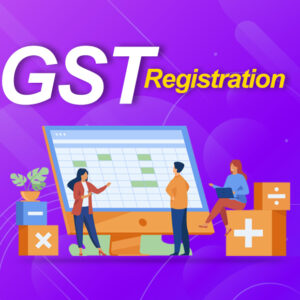Description
1. Introduction to GSTR-9C
What is GSTR-9C?
GSTR-9C is a crucial compliance document in the Indian GST regime that serves as a reconciliation statement. It matches the details furnished in the annual return (GSTR-9) with the taxpayer’s audited financial statements. This reconciliation is vital for ensuring that the details reported under GST are accurate and consistent with the financial statements, thereby preventing discrepancies and potential tax evasion.
2. Applicability and Turnover Limit
GSTR-9C Applicability
GSTR-9C is applicable to:
- Every registered taxpayer whose aggregate annual turnover exceeds ₹5 crores during a financial year.
- It includes taxpayers registered under regular schemes but excludes composition scheme taxpayers, Input Service Distributors (ISD), non-resident taxable persons, and casual taxable persons.
GSTR-9C Turnover Limit
The turnover limit for the applicability of GSTR-9C has been revised from ₹2 crores to ₹5 crores to simplify compliance and reduce the burden on smaller businesses. This means that only businesses with an annual turnover exceeding ₹5 crores are required to file GSTR-9C.
3. Due Date for GSTR-9C
What is the Due Date for GSTR-9C?
The due date for filing GSTR-9C is generally December 31st following the end of the financial year. For instance, for the financial year 2022-23, the due date would be December 31, 2023. However, the government may issue notifications extending this deadline, so taxpayers should stay updated with official announcements.
4. Importance of GSTR-9C
What’s the Importance of GSTR-9C?
- Ensures Compliance: It ensures that the turnover declared, tax paid, and credits claimed are consistent across all returns and financial statements.
- Facilitates Audits: Serves as an essential tool for GST authorities during audits to verify the correctness of returns filed.
- Promotes Transparency: Enhances transparency in financial reporting under GST, reducing the chances of fraud.
- Improves Accuracy: Helps in identifying discrepancies between the financial records and GST returns, ensuring accurate tax reporting.
5. Contents and Format of GSTR-9C
GSTR-9C is divided into two main parts:
- Part-A: Reconciliation Statement
- Part-B: Certification
Contents of GSTR-9C
- Basic Details: Information such as GSTIN, legal name of the registered person, trade name (if any), and financial year.
- Reconciliation of Turnover: This includes reconciling the turnover declared in the audited financial statements with the turnover declared in GSTR-9.
- Reconciliation of Tax Paid: This section matches the tax payable and the tax paid, identifying any discrepancies.
- Reconciliation of ITC: This involves reconciling the ITC claimed in GSTR-9 with the ITC availed as per the audited financial statements.
- Auditor’s Recommendations: This part includes the auditor’s suggestions on any additional tax liabilities due to discrepancies identified during the reconciliation.
6. Part-A: Reconciliation Statement
Detailed Breakdown of Part-A
- Reconciliation of Gross Turnover:
- Turnover as per audited financial statements: The total turnover reported in the audited financial statements.
- Adjustments: Adjustments for items like unbilled revenue, unadjusted advances, credit notes issued, etc., are made to arrive at the gross turnover under GST.
- Reconciliation of Taxable Turnover:
- This includes adjustments for exempt supplies, nil-rated supplies, non-GST supplies, and other adjustments to match the taxable turnover declared in GSTR-9.
- Reconciliation of Tax Paid:
- This section details the reconciliation of the tax payable as per GSTR-9 with the actual tax paid during the financial year. It includes CGST, SGST, IGST, and Cess.
- Reconciliation of ITC:
- Involves matching the ITC availed as per GSTR-9 with the ITC available as per the audited financial statements, considering adjustments like ineligible credits, ITC on capital goods, etc.
7. Part-B: Certification
Detailed Breakdown of Part-B
- Auditor’s Certification:
- The auditor provides certification confirming the reconciliation and certifying that the information provided in the reconciliation statement is true and correct. This certification can be done by a Chartered Accountant or Cost Accountant.
- Auditor’s Observations:
- Any observations or comments by the auditor regarding discrepancies, compliance, and potential liabilities are documented here.
8. Verification/Self-Certification by Taxpayer
Verification by Taxpayer
The taxpayer must sign and verify the GSTR-9C form to confirm the accuracy and completeness of the information provided. This step is crucial as it ensures the taxpayer’s acknowledgment of the correctness of the data before it is submitted.
Self-Certification
To simplify compliance, the government has allowed self-certification of GSTR-9C for specific categories of taxpayers. This means that in some cases, taxpayers themselves can certify the reconciliation statement without requiring an external audit, thereby reducing the compliance burden for smaller businesses.
9. Changes in GSTR-9C Format & Filing
Recent Changes in GSTR-9C Format & Filing
- Turnover Limit Adjustment:
- The turnover threshold for mandatory filing of GSTR-9C has been increased from ₹2 crores to ₹5 crores.
- Simplified Format:
- The format of GSTR-9C has been simplified to make it easier for taxpayers to complete and file the form.
- Self-Certification:
- Introduction of self-certification for certain categories of taxpayers to ease the compliance process and reduce the need for external audits.
10. Frequently Asked Questions (FAQs)
FAQs
- Who needs to file GSTR-9C?
- Taxpayers with an annual turnover exceeding ₹5 crores.
- Is GSTR-9C mandatory for all taxpayers?
- No, it is mandatory only for those with an annual turnover above the specified limit.
- Can GSTR-9C be self-certified?
- Yes, for certain categories of taxpayers, self-certification is allowed.
- What happens if there are discrepancies in GSTR-9C?
- Discrepancies may result in additional liabilities, which need to be paid and reported.
- Is the due date for GSTR-9C the same every year?
- Generally, yes, it is December 31st of the subsequent financial year, but it can be extended by government notifications.
- What are the penalties for late filing of GSTR-9C?
- Penalties include late fees and interest on unpaid tax liabilities, as prescribed under GST law.
- Where can I find the latest updates on GSTR-9C?
- Latest updates can be found on the official GST portal and through government notifications.




Reviews
There are no reviews yet.